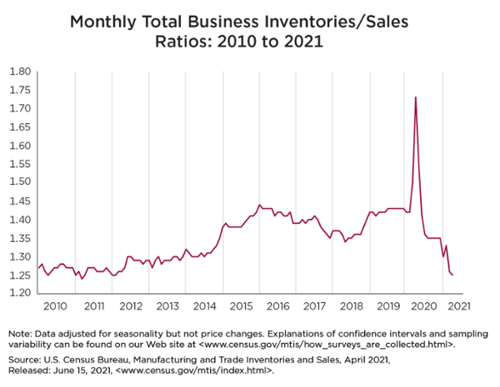Budget season is here again, after what was likely the most unpredictable planning year on record. Business continuity plans were tested, and shifting priorities took precedence over pre-planned agendas. This shift evolved the way we work and altered employee expectations. Looking forward, the need to accommodate a hybrid workforce and the lingering presence of economic uncertainty will continue to influence 2022 technology budgets for small- to medium-sized businesses.
Before we make our budgeting recommendations, it is important to note that cyber threats are on the rise. This increase in threats is a side effect of the pandemic. When businesses made the quick shift to remote and hybrid workforce environments, it created new security vulnerabilities for them to address. In fact, the unprecedented number of high-profile breaches have prompted an executive order to improve the nation's cybersecurity posture, in addition to insurance carriers tightening their underwriting standards to obtain or renew cyber insurance policies.

BUDGETING RECOMMENDATIONS
Before finalizing your 2022 technology budget, carefully consider the following cybersecurity, productivity, and industry trends influencing tech spend.
-
Know and Address Your Cybersecurity Risks
-
Enforce Multi-Factor Authentication (MFA)
-
Modernize End-of-Life & Legacy Systems (Manage Technical Debt)
-
Obtain Deeper Insights From Data
-
Tech Buying Lead Times
-
Manufacturer Cost Increases
-
Predictable Technology Expenses
Know and Address Your Cybersecurity Risks
2021 has seen a barrage of high-profile cybercrimes, enough to get the attention of the White House and US corporate leaders like Microsoft, Amazon, Google, and Apple. They have brought new initiatives to the table that upgrade cybersecurity investments of US government agencies and private-sector partnerships. But cybercriminals are not just focused on large entities. According to the latest report from the data breach team at Verizon, the level of sophistication and persistence of cyberattacks is changing and closing the threat gap between small and large organizations.

Like many organizations, you may have some or all of your corporate data in the cloud or have outdated systems in place that are highly vulnerable. Does your budget address these vulnerabilities by further securing cloud data and replacing legacy and unsupported systems? With cyber threats increasing, it is more important than ever to evaluate your organizational security posture and align your cybersecurity strategy with industry best practices. If you are not confident in the effectiveness of your cybersecurity controls and looking for clear direction on where and how to fortify your organization against modern attacks, consider a quality cybersecurity risk assessment.
Enforce Multi-Factor Authentication (MFA)
Over the last year, the cybersecurity measure known as MFA has garnered a lot of press. Not necessarily for how effective it is at preventing account compromise attacks (99.9% according to Microsoft), but for the lack of enforcement within organizations. In the 2021 Verizon Data Breach Investigations Report, the US Secret Service reported that "organizations neglecting to implement multi-factor authentication, (…), represented a significant percentage of victims targeted during the pandemic." This fact has driven many government agencies and cyber insurance carriers to regard MFA as a foundational cloud security tool, requiring enforcement and adoption before contract consideration.
It's not enough to have MFA and check a security box on your compliance or vendor management forms; companies need to enforce the use of the tool to be effective. If your company is struggling with the adoption of MFA or needs to better understand how MFA is proven to prevent some of the most common and successful cyberattacks, review this easy-to-follow MFA guide.
Modernize End-of-Life & Legacy Systems (Manage Technical Debt)
Every time we turn around, it seems another essential piece of company technology has reached what is known as end-of-life (EOL), meaning the manufacturer stops developing and servicing the hardware or software. The product is dead in the manufacturer's eyes, and they will no longer deliver technical support, upgrades, bug fixes, or security patching. Without these updates and patches, aging technology becomes vulnerable to attacks and can compromise any systems connected to it. Allowing generational obsolescence within your organization introduces a high-security risk that can be avoided.
 You may have a critical EOL legacy application or system operating without incident for years, so the need to upgrade seems like an unnecessary investment. The fact is, the longer these EOL technologies are kept past their supported lifecycle, the more prone to failures the system will become, and the higher the cost will be to keep them running. At some point, that critical legacy application or system will stop communicating with modern technologies, and fewer people will be familiar with managing the product, creating potential productivity and operational risks.
You may have a critical EOL legacy application or system operating without incident for years, so the need to upgrade seems like an unnecessary investment. The fact is, the longer these EOL technologies are kept past their supported lifecycle, the more prone to failures the system will become, and the higher the cost will be to keep them running. At some point, that critical legacy application or system will stop communicating with modern technologies, and fewer people will be familiar with managing the product, creating potential productivity and operational risks.
Over time, the long-term underinvestment in your critical IT infrastructure and application stack creates a situation known as "technical debt." The opportunity risks associated with technical debt keep you from delivering and executing on business strategies you want and need to compete in a fast-developing marketplace. In the end, the operational, opportunity, security, and financial risks far exceed any benefit of retaining EOL and legacy applications and systems. If you are running on any aging technology, find out what options are available to decrease your Technical Debt.
Obtain Deeper Insights From Data
One thing most organizations have enough of is data. Business leaders deal with an overwhelming amount of disparate data and struggle to draw actionable conclusions from it. In one report by Dunn & Bradstreet, nearly 46% of business leaders surveyed say they don't have the technology in place to take advantage of their data, leading to business-critical challenges. Since data is integral to business operations, turning it into actionable intelligence is vital to making informed decisions, gaining a competitive advantage, and uncovering cost-saving efficiencies.
 Your business insights may come from various sources, but they must be identified, organized, and analyzed. This process requires planning, budgeting, the right tools, and expertise. Not long ago, achieving this type of data architecture was typically reserved for large corporations due to costs and resources; however, times have changed. Small- and medium-sized businesses (SMBs) now have tools available to replace the time-consuming and costly traditional software development process with cost-effective drag-and-drop interfaces. Known as low-code app-building software, companies can now have large amounts of dispersed data combined into a single source of truth, uncovering valuable insights.
Your business insights may come from various sources, but they must be identified, organized, and analyzed. This process requires planning, budgeting, the right tools, and expertise. Not long ago, achieving this type of data architecture was typically reserved for large corporations due to costs and resources; however, times have changed. Small- and medium-sized businesses (SMBs) now have tools available to replace the time-consuming and costly traditional software development process with cost-effective drag-and-drop interfaces. Known as low-code app-building software, companies can now have large amounts of dispersed data combined into a single source of truth, uncovering valuable insights.
Ahead of data analysis, companies must have all their decentralized data identified and organized. This can often be a roadblock for many SMBs who lack the internal resources needed for proper data evaluation. To solve this challenge, companies can outsource this process to a project engineer. They can identify, organize, then efficiently and cost-effectively automate your business processes using a low-code solution like the Microsoft Power Platform. Now, your disparate data can be automatically integrated, increasing efficiencies while delivering a more exceptional experience to your team and your clients.
Tech Buying Lead Times
Lack of supply, high demand, and supply-chain disruptions have caused a significant burden on every industry worldwide, particularly when it comes to computer chips. The lack of these tiny chips has resulted in major delays in orders and price increases on laptops, printers, firewalls, and other corporate technology. We have seen delivery times from manufacturers for laptops and computing hardware skyrocket from a couple of days to a couple of months or more. The most recent US Census Business Inventories Report shows a clear picture of the record low inventory-to-sales ratio we all felt across all industries, and it is still trying to recover.
The best way to get in front of this shortage is to forecast where you will need additional infrastructure. You may choose to adopt a hybrid workforce that requires duplicate workstations or upgrade computer hardware as you reopen a physical office. The worldwide inventory shortage removes any expectations of having this technology equipment in place when you need it without proper planning. Being proactive and predictive in your hardware forecasting is the best way forward.
Manufacturer Cost Increases
When reviewing costs for budgeting, it is always good to consider pricing increases on commoditized items, but also cost increases due to value creation. That is exactly what Microsoft has conveyed regarding their rate increase on Microsoft 365 subscriptions. Since the release of Office 365 a decade ago, over 20 new apps have been added to the product suite. The additional value being offered provides greater opportunity for security and operational efficiencies, validating their March 1, 2022 price increase.

Predictable Technology Expenses
The need and subsequent employee expectation to "work from anywhere" propelled many companies to adopt the cloud nearly overnight. While many businesses found great success and were prepared for the leap, others quickly realized the cost of their technical debt. The generational obsolescence of many legacy and on-premises applications and systems kept and continues to keep them from functioning properly in an efficient cloud environment, impeding productivity, compromising security, and incurring unplanned costs.
The benefits of maintaining technology will put you on a continuous improvement journey and keep your technical debt to a minimum. No surprises, just a predictable and deliberate march towards a productive and secure computing environment.
For most businesses, IT budgeting and planning are well underway. If you would like assistance with prioritizing and maximize your IT budget, fill out our form below to get the conversation started.
As your managed IT and security services partner, Systems Engineering is here to help simplify the technology budgeting process. By staying on top of trends and the industry shifts that influence tech spending, we can help you make sound investments in your technology.
For technology and budgeting support, contact us at info@systemsengineering.com or call 888.624.6737 to speak to a Systems Engineering representative. Clients, please reach out to your Account Manager.





